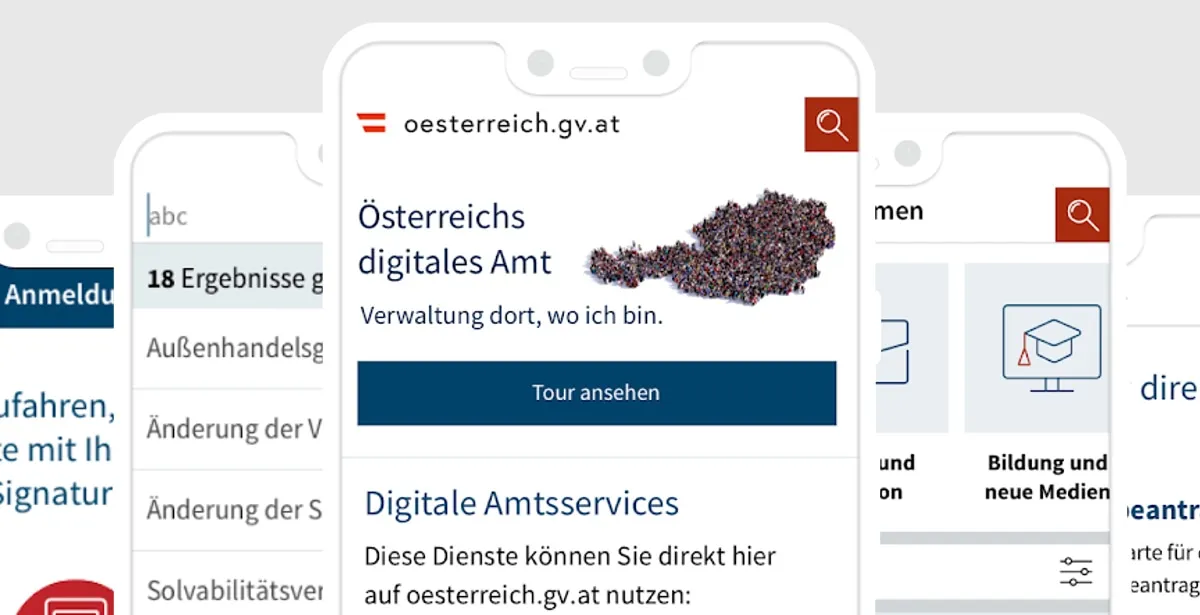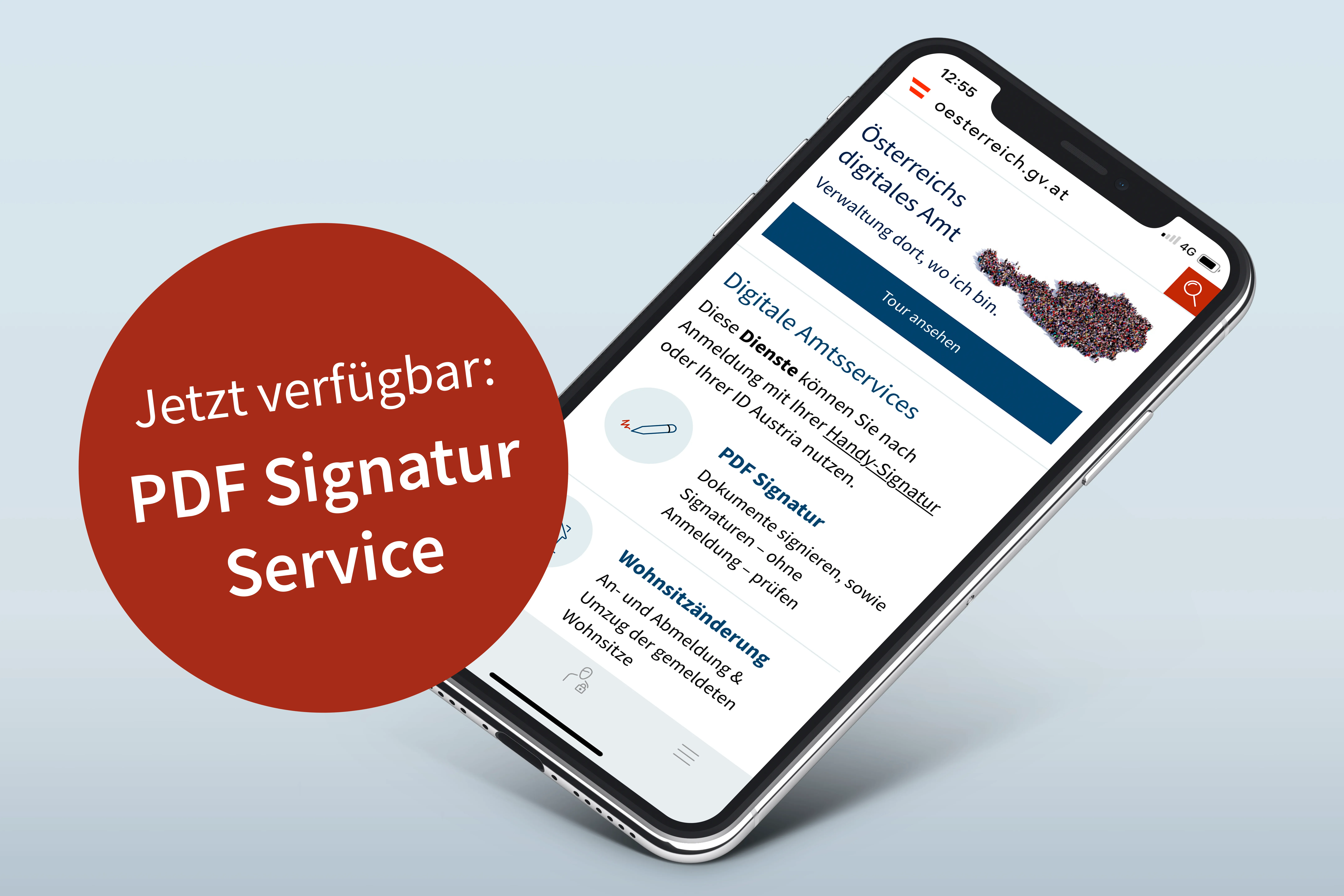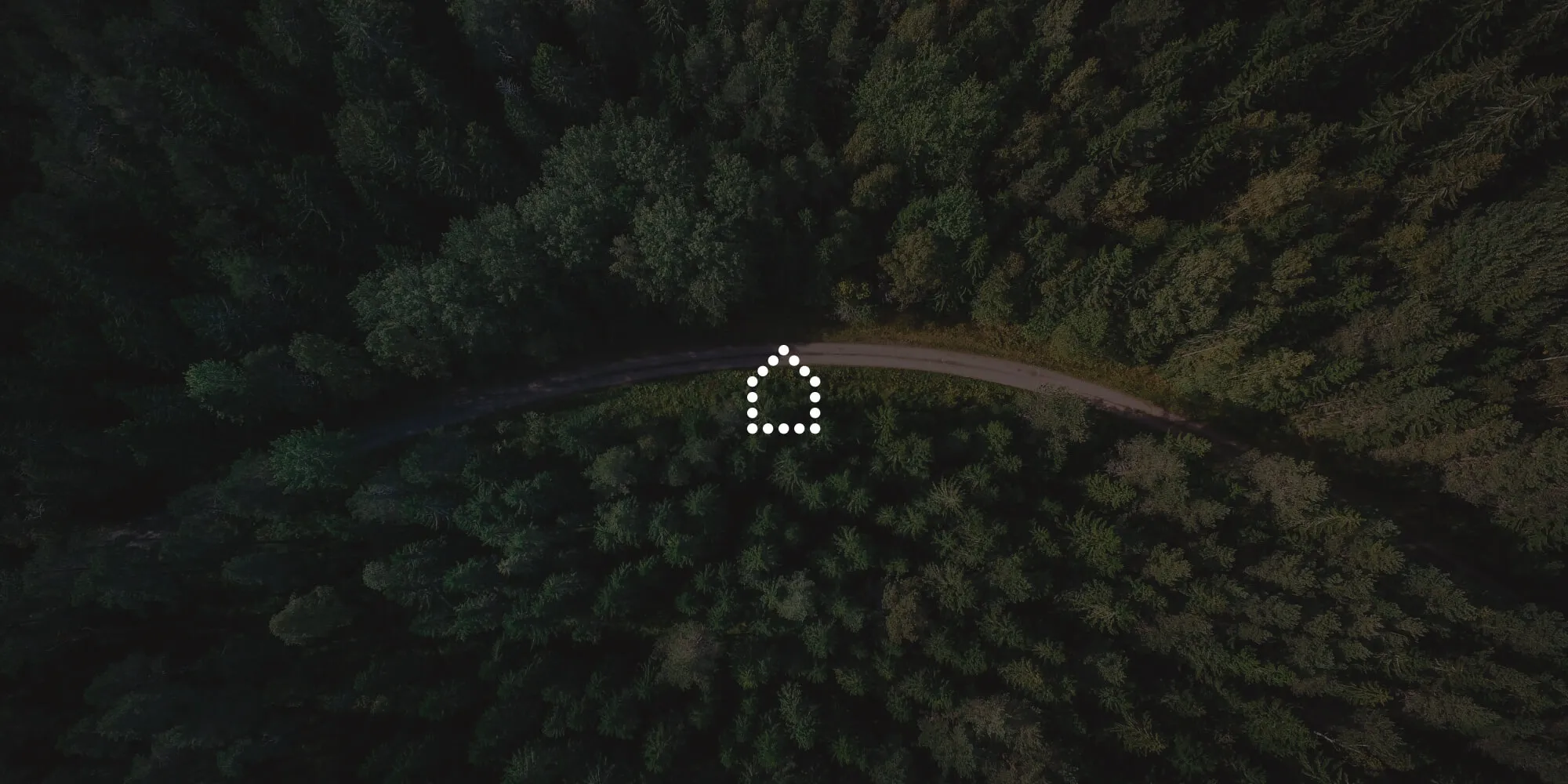How the Austrian government uses Nutrient to bring digital signatures to everyone
Table of contents

The Austrian government offers citizens access to many services digitally. Examples of this include requesting voting cards online, changing the registration of a main residence, receiving official letters via email, and accessing various services for expectant parents.
The Digitales Amt app is part of the oesterreich.gv.at project, which was implemented by the Federal Ministry for Digital and Economic Affairs in cooperation with the Austrian Federal Computing Centre (BRZ).

The decision process
The latest version of the app offers a new service for citizens featuring a simple, fast, and secure way to digitally sign PDF documents. These signatures have the same legal standing as wet signatures.
To comply with all the details surrounding digitally signing a PDF document, officials evaluated various solutions on the market and ultimately decided to use the Nutrient SDK.
While there are various offerings with the functionality to create a digital signature on a PDF, there are many differences, outlined below, that can play a huge factor in the outcome of the project.
Technical know-how: How easy can the third-party component be integrated into an existing system? Does it support modern languages such as Swift? Is the API idiomatic to the OS or does the project force names that don’t fit the operating system because no care was taken to map them from a cross-platform layer?
Nutrient’s SDK is unique in that it’s made to be a natural extension of a respective system. This means that for a developer, it feels just like any other system framework. We take great care to comply with platform naming conventions and don’t force arbitrary naming for the sake of cross-platform development. Most projects have separate teams for iOS, Android, and Web development, and they’ll integrate faster with names that fit the OS.For iOS specifically, we’ve been working the past year to make our API idiomatic for Swift so that it takes less typing and guesswork — developers can work with it naturally and don’t need to study long lists of documentation.
Security: Which processes are used to build the SDK? Is the code peer reviewed? Does the SDK communicate back to servers (e.g. to verify the license or to transfer analytics data)? Can one be certain there’s no government intervention?
Nutrient has been designed from day one to work completely offline. There’s no code that “phones home” or reports analytics data. Having an offline on-premises-capable SDK is critical for organizations and companies facing the latest privacy standards such as GDPR.User interface: How good is the signing experience? Does it feel fast and fluid, or does it feel like something that has been built with no care?
Nutrient’s solution offers a modern, intuitive design that makes signing documents a pleasure. We designed the experience individually for each of the platforms we support so it feels right for everyone. You can see some examples in a related post.Support: Where is the company located, what languages do they speak, and how fast do they react?
While all the above matters, what’s really important is what happens when a developer is blocked or an issue arises. As Nutrient has headquarters in Austria and the United States, we’re able to offer support in both German and English and cover both European and American business day timing to reply to support tickets. This makes up about 65 percent of the world’s timezones! As a result, the vast majority of tickets are answered within the same business day.
“It was crucial for us to be able to talk directly to the engineers so that problems could be resolved quickly.”
*- Kurt Fleck, Account Executive for Digital Strategy at BRZ *
Implementing digital signatures in a PDF
Electronic signatures in the Digitales Amt app are implemented using PAdES (PDF Advanced Electronic Signatures), which is a modern format.
While PDF and ISO 32000-1 provide a framework for digitally signing documents, PAdES specifies a precise profile, making it compliant with ETSI and, as such, legally binding in all EU member states since July 2014(opens in a new tab).
Nutrient fully supports PAdES. However, there was a twist: The requirements for this project specified a specific design for the digital signature appearance in the document. While we supported a wide variety of customization options, there was no option to completely replace the appearance with a custom one.
We quickly prioritized this new appearance setting and offered the developers a nightly build so that they had a version to test within a few days of requesting the extension. The new .signatureOnly mode is now available to and officially supported for all our partners.

Collaborating with engineering
Every project is different, and while we have a large set of examples for various use cases, it can be extremely beneficial to have direct access to our developers. To kickstart integration, we did a screensharing session via Zoom and worked together with one of the engineers on the BRZ side to implement the initial signing workflow.
This covered the majority of the use case, and subsequent follow-up questions were handled by way of direct one-on-one contact via our support ticketing system. This was done with the same engineer who already worked on the kickoff and had detailed knowledge of the project.
Conclusion
The new version of the Digitales Amt app just launched, and it’s another huge milestone in Austria’s e-government efforts. We’re proud to have been chosen as a partner for such a critical feature. Digitales Amt can be downloaded on the iOS App Store(opens in a new tab).








